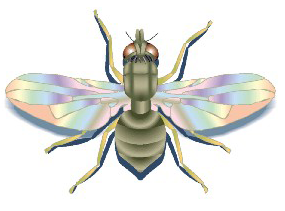
The dung-breeding buffalo fly is one of Australia’s major pests, causing cattle to suffer severe loss of productivity and weight loss. The pest is mostly found in Western Australia, Northern Territory, Queensland and Northern New South Wales; regions where the climate is tropical or sub-tropical.
What to look out for
The buffalo fly survives by sucking the blood of its cattle host, on which it lives. If you suspect your cattle might be infested, look out for these telltale signs:
• The fly itself (often in plague numbers) is easily observed and often rapidly builds up numbers creating a ‘Fly wave’
• Irritated skin
• Cows that have become heavily infested will try to dislocate flies by rubbing against posts, buildings and trees
• Significant hair loss and skin grazes are possible evidence of the aforementioned rubbing
• Skin that has been broken or damaged can become infected and/or attract other flies
Numbers of these pests grow during spring and summer. The female lays its eggs around the edges of cow pats. As they hatch, the larvae move into the faeces where they grow into adult flies.
Treatment
There are several methods of treating infestation with chemicals; ear tags and sprays just two of them. Vetmec Pour-on controls this fly for up to 28 days after treatment. It has been reported to Chemvet that cattle owners have noticed a massive reduction in fly numbers almost overnight after treatment with either Vetmec Pour-on Vetmec For Vetmec Cattle injection! One dose of Vetmec will generally get most producers through a “fly wave\”, but in years where fly numbers start to build again, a second treatment 6 weeks after the first may be required.
